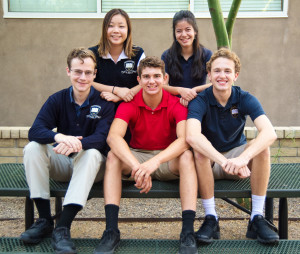By Clara Moffitt
The PSAT. That dreaded test you hear Mrs. Moffitt ceaselessly talk about. The test your parents hassle you over, the test you started taking in 9th grade when you thought you had escaped the grasps of algebra and, let’s be honest, the test you have studied for … maybe twice.

Well, believe it or not, Mrs. Moffitt was right! The PSAT is extremely important. Contrary to popular thought, the PSAT is much more than simply a practice for the SAT. The PSAT is what qualifies students to be a National Merit Scholar: a highly competitive recognition received only by the top 99th percentile of test-takers. “Becoming a National Merit Semifinalist or Hispanic Scholar with a high score on the PSAT is a student’s biggest college scholarship opportunity,” says TPA’s College Counselor, Mrs. Moffitt.
The score needed to qualify to be a National Merit Scholar changes every year depending on the performance of all the other students, so it is extremely important to study. “The key to a high score,” says Mrs. Moffitt, “is spending about 150 hours of study time taking about 20 practice tests [to become] familiar with the test questions and increase your speed.”
Tempe Prep has an outstanding history of students achieving National Merit recognition each year. In 2013, TPA alum Caleb Peckham even scored a perfect 240. He went on to study engineering at Princeton.
This year, TPA has an impressive five National Merit Semifinalists: Aimee Cheng, Lindsay Newfeld, Samuel Nagy, Cameron Pickard, and Carter Sampson. That’s more than most high schools in Arizona — small and large! What was the key to their success? They all agree that practice tests are the most important factor in preparing for the PSAT.
Carter Sampson asserts, “The most effective way to improve is practice tests, practice tests, and more practice tests.” Cameron Pickard agrees, stating, “It all comes down just to practice and repetition until I achieved the scores I was looking for.”
Aimee Cheng recommended taking small sections of the test on weekdays and then full practice tests on the weekend. She also recommends downloading the official SAT app since “it has lots of real practice questions that you can take on the go and study anywhere. It is also a good way of studying for 10-15 mins if you don’t have time one day to commit to doing a long section. Also, you can scan the practice test answer sheets with the app for faster grading.”
For current underclassmen, Aimee also highly recommends taking the SAT in spring of sophomore year. She explains, “Nothing is better than experience when it comes to standardized tests. Taking the real test and getting my scores back showed me my level and helped me understand how much more I needed to study over the summer to get the National Merit Semifinalist score.” Similarly, Cameron suggests, “When you register to take the SAT and ACT, order your test booklet back so you can review the questions you missed.”
They each emphatically agreed that it’s very important to practice with SAT tests written by the College Board (since they are the people who write the test) and, after you take practice tests, to go over your mistakes.
Are all those practice tests worth your time? “Yes!” Mrs. Moffitt asserts. “The National Merit recognition increases your college options. And with the National Merit scholarships worth $70,000 to $270,000, it is a phenomenal financial return on your investment of time.”
Once again, we find that TPA’s “Work Works” attitude benefits students — on the field, in the classroom and, with the PSAT — leading to a happier career and bank account!
